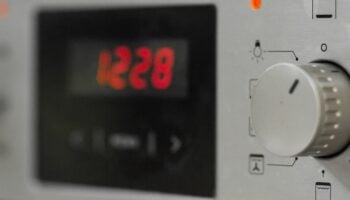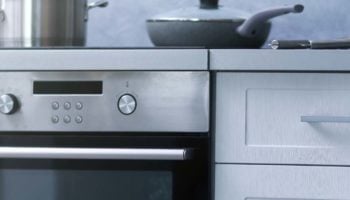Whether you’re having dinner with friends or cooking a meal for yourself, it can be frustrating when your oven keeps tripping your circuit breaker. You reset the circuit, head back to the kitchen, turn the oven back on, and it trips again!
An oven that trips your circuit breaker is likely causing a circuit overload, isn’t plugged in correctly or has a malfunctioning plug, or there’s a more significant electrical issue within the oven.
Read on to find out the causes of an oven tripping a circuit breaker and how to fix them.
Let’s dive in!
Fixing An Oven That Trips Your Circuit Breaker: 4 Solutions
Before we solve a problem, it’s important to understand it. Below are the 4 main reasons why an oven may trip your circuit breaker.
#1: Circuit Overload
The circuit overloads when an appliance plugged into it requires more electricity than the circuit can supply. Circuit overloads could potentially occur if the same circuit breaker supplies several appliances. In my experience, the best remedy for a circuit overload is redistributing some of the load.
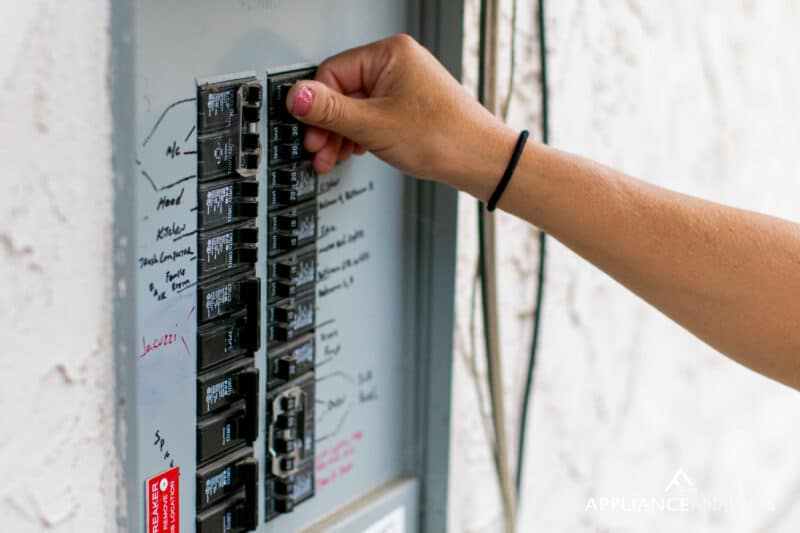
Fixing An Oven’s Circuit Overload
First, you’ll want to determine if the circuit is overloaded with power from the oven. In other words, you’re determining if there is an issue with the circuit itself as opposed to your oven. Unfortunately, diagnosing the source of the short circuit isn’t generally a task that should be handled on your own. In cases of complex electrical layouts, my usual advice is to call a professional instead.
First and foremost, the technician will determine whether multiple appliances are connected to the same circuit as your oven. If so, all appliances other than the oven will be disconnected from the circuit. The oven will then be turned on to see if the circuit is tripped again.
If the circuit doesn’t trip, the other appliances must be rerouted to different circuits. If the circuit does trip, you may need to upgrade to a larger amp circuit breaker. However, because there’s an excessive power load, a fault in the circuit breaker and wiring issues should also be investigated.
#2: Appliance Issues
When an appliance is drawing excessive electricity, often due to a malfunction or defect, it can result in the circuit tripping. It could be from general wear and tear, or an internal component, such as the relay board, could be defective.
In either instance, a malfunction scenario can force the appliance to generate more power than usual to operate normally. If you suspect appliance issues, the oven must be disconnected from the electrical supply and repaired.
Fixing Circuit-Tripping Oven Issues
If you have reason to believe that an internal component is causing the trouble, you can ensure that only the oven is connected to the circuit breaker. Once you’ve double-checked, switch the oven on to a low temperature. If you notice that the circuit breaker doesn’t trip immediately, then there’s no short in the fuse that the oven is plugged into, which is good news.
Next, increase the temperature of the oven slowly. If the circuit breaker ends up tripping as you are slowly increasing the temperature of the oven, the problem likely lies with the heating element.
Now, your oven probably has two separate heating elements. If you have a multimeter, you can use it to test the elements for continuity and determine if one or both are failing and, thus, which one you need to replace.
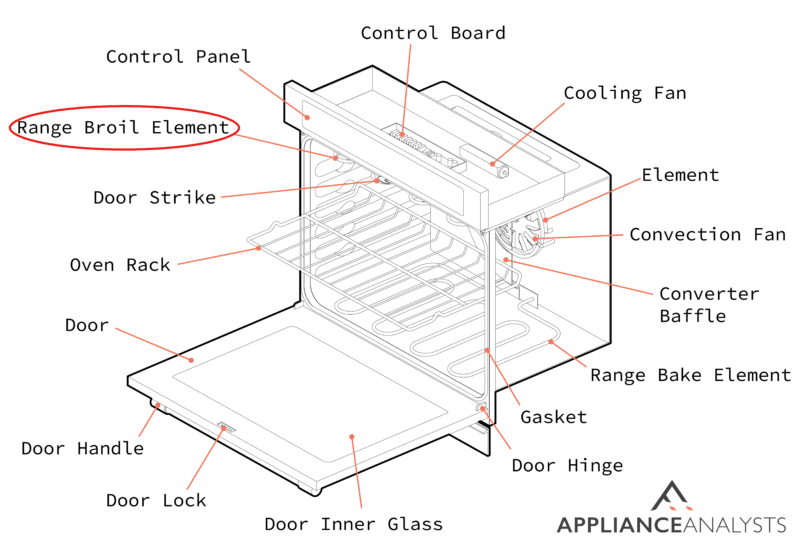
Other heating components in your oven could potentially cause problems that you’ll need to check if your heating elements turn out fine. Other elements include the selector switch (designed to change the oven’s functions), thermostat, fan, and internal lamp.
The switches in the oven will appear burnt or broken if they are defective. It’s best to obtain a wiring diagram drawing of your oven to locate the switches.
That said, more often than not, it’ll be your heating element. When there’s a short circuit at any point during your oven’s lifespan, some of the wires in the heating element can pop off and start making contact with the appliance’s metal frame, causing tripped breakers.
The good news is that repairing a faulty heating element is cheap and quick!
#3: Short-Circuiting
A circuit can short when the insulated section of the wire comes into physical contact with another wire, causing a surge in amps within the circuit, thus tripping your breaker. From what I’ve seen, short circuits can often occur if the household electrical wiring has deteriorated over the years, resulting in frays or cracks.
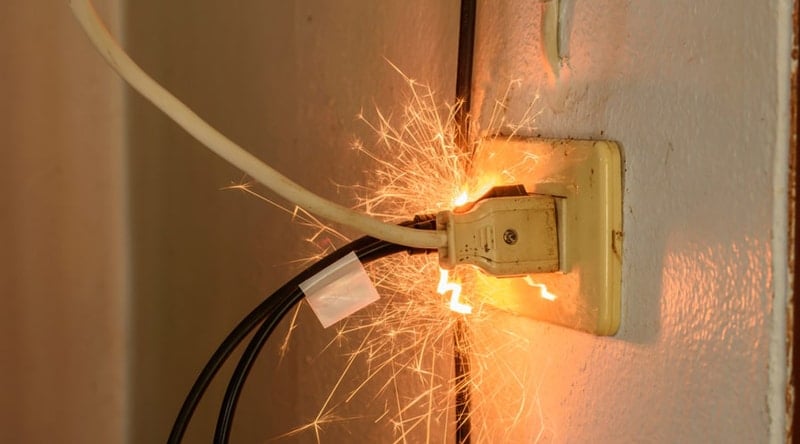
Fixing An Oven Plug or Wiring Issue
Ideally, a technician should perform the test as well. They will use a tool to measure the current when the appliance is turned off. A normal reading is zero, but if it shows more than 0.3A, then there is a good chance there is damage to the wiring somewhere. Once the appliance has been unplugged, the power plug will also be examined for any signs of damage or soot buildup.
#4: Ground Fault
A ground fault will occur when the hot wire of the circuit breaker comes into physical contact with a metal component of some kind or another wire.
What’s Causing Your Oven to Trip the Circuit Breaker?
If a circuit breaker in your home is tripping, your oven may definitely be causing it. If the oven exceeds the electrical power the circuit is designed to handle, the breaker will trip.
Increased power consumption can be due to a malfunction in the oven or because the oven you’re using has a higher power consumption rate than the circuit is designed to produce. Whatever the case, we’ll find out through some diagnostic testing.
No More Tripped Breakers While Baking
These are the three most common issues that cause problems with ovens and circuit breakers tripping. Ultimately, trial and error is the best way to determine the source of the issue you’re experiencing. Still, hopefully, the above information helped you get to the root of your oven issue.
Ideally, though, a dedicated circuit for larger appliances, such as your oven, is best to avoid issues with your circuit breaker tripping unexpectedly. A professional can help you with the task if you’re not handy with electrical systems.
I hope you found valuable information in this guide. Please check out some of our other guides below and consider subscribing to our newsletter.
Have a great day!
-Craig.






